 Written by Hulet Smith, OT
Written by Hulet Smith, OT
Sensory rooms, an increasingly popular concept in educational and therapeutic settings, offer a targeted approach to nurturing sensory skills and fostering overall development. Equipped with specially designed elements, sensory rooms present a unique environment stimulating different senses, promoting cognitive growth, motor skills, and emotional well-being. This is particularly relevant considering approximately one out of every six children experiences sensory processing difficulties that are severe enough to impact their daily lives. Particularly beneficial for these children and for those with neurodiverse conditions like Autism, ADHD, or Sensory Processing Disorder, these rooms are a sanctuary for exploration, learning, and growth.
If you're starting to explore the concept of sensory rooms or are seeking to expand your knowledge of their various uses, this is an ideal beginning point.
 | Complete Bundle for Calming Sensory Room View Product |
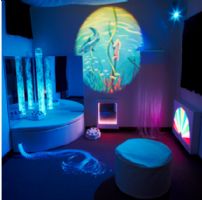 | Complete Bundle for Superactive Sensory Stimulation Room View Product |
Sensory rooms enhance developmental processes, particularly for children with sensory processing challenges. In our current society, with a constant bombardment of various stimuli, the risk of sensory overload is real. It can be particularly distressing for children with sensory processing disorders or neurodiverse conditions like Autism.
Sensory rooms are important as they provide a structured, controlled environment where children can explore different senses at their own pace. This unique space allows them to comfortably investigate various sensory stimuli, assisting them in managing their responses and promoting improved sensory integration in the real-world environment.
Additionally, sensory rooms provide a soothing and calming environment that can help reduce anxiety and stress, boost focus and attention, and improve social skills and overall well-being. There is also flexibility in the design of sensory rooms, allowing them to be tailored to an individual's specific needs. This means that children can engage in activities that are enjoyable, stimulating, and beneficial to their personal development.
Sensory rooms benefit many individuals, not just those with diagnosed conditions. While it's common to think of sensory rooms as primarily serving children with Autism, Attention-Deficit/Hyperactivity Disorder (ADHD), or cerebral palsy, the reality is that many more children and even adults, including those without a specific diagnosis, can take advantage of these specialized environments. They provide a safe and supportive space for people learning to manage various sensory disorders.
However, the benefits of sensory rooms don't stop there. They are also invaluable for children facing behavioral challenges and learning difficulties. The sensory elements in each room are designed to provide benefits tailored to one's unique needs. These can range from improving fine and gross motor skills to enhancing communication abilities and boosting focus and concentration.
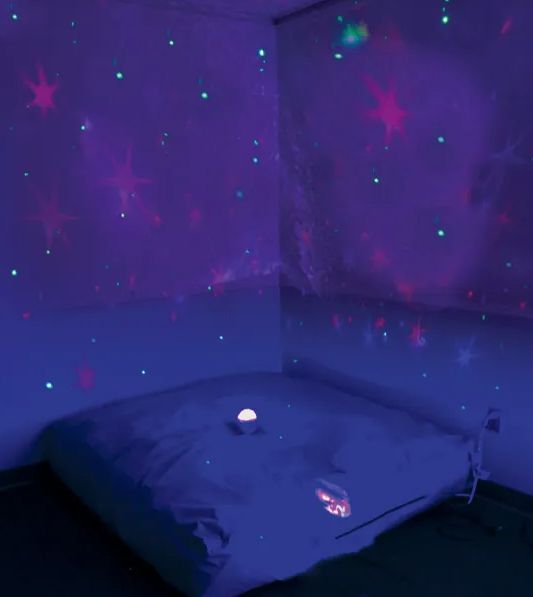
The cost of setting up a sensory room can vary widely based on several factors, including the specific equipment chosen and the room size. While some sensory room components might have a higher price tag, we offer many affordable options that can provide similar benefits. It's all about creativity and understanding your needs. You can design an effective sensory room that aligns with your budget by being resourceful and making thoughtful choices.
Absolutely! Sensory rooms are not exclusive to children; they can also provide immense benefits to adults. Sensory challenges or disorders don't necessarily resolve as children grow into adults. Many adults continue to struggle with sensory processing issues, and sensory rooms can be a valuable resource for them.
Choosing the right elements for a sensory room greatly hinges on your unique needs. Sensory experiences are highly individual, so it's crucial to prioritize elements that address your specific challenges. For instance, a child facing a vestibular disorder might benefit greatly from a rocking chair that aids balance and coordination. Meanwhile, a high-energy, restless person might need a crash pad or exercise balls to help expend energy safely. The key is understanding your sensory preferences and challenges and creating an environment that responds to these needs.

Are you looking to create a sensory haven for individuals with sensory processing challenges or those seeking relaxation and stimulation? From sensory lighting and tactile walls to calming aromatherapy and interactive sensory panels, discover a myriad of products and design concepts we carry to craft an immersive and personalized sensory experience. Whether it's for a school, therapy centers, or home environments, our sensory room products cater to diverse sensory needs, promoting relaxation, engagement, and sensory exploration.
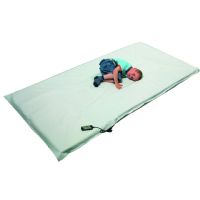 | Vibrating Pediatric Floor Mat View Product |
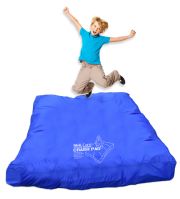 | Skil-Care Sensory Integration Crash Pads View Product |
Crash and safety mats are essential components in a sensory room, providing a soft, safe landing zone for children engaging in play. These mats are designed to absorb impact, making them perfect for jumping, rolling, or other high-energy movements. Beyond their practical safety function, they also offer children an opportunity to release excess energy safely. Moreover, using these mats encourages physical activity, promoting both fine and gross motor skill development. Whether a child is jumping for joy, tumbling in play, or seeking a soft spot to relax, crash and safety mats provide the foundation for safe sensory exploration.
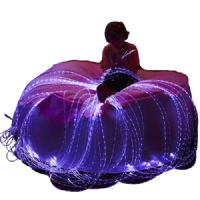 | LED Fiber Optic Softie Bean Bag Cushion View Product |
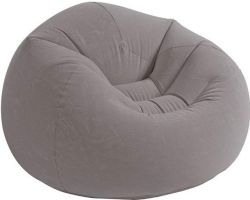 | Waterproof Inflatable Beanless Bag Chair View Product |
Sensory bean bags are a great addition to a sensory room. Unlike standard furniture, these bean bags boast a soft and adaptable form that molds to a child's body shape, offering a unique sensory experience known as proprioceptive input. This form of deep-pressure stimulation enhances a child's awareness of their body position and movement, an invaluable aid for those coping with sensory integration or motor coordination difficulties.
Sensory bean bags also stand out for their multi-purpose use. Their plush structure allows them to act as crash pads, offering children a safe landing during vigorous play or a soft surface when they seek comfort. With their dual purpose of providing therapeutic sensory input and ensuring physical safety, sensory bean bags are a key element in any sensory room.
 | Sensory Rocking Chair by TFH View Product |
 | Protac SenSit Sensory Chair Set View Product |
 | Sensory Rocking Bean Lounge Chair - 2 Sizes by Southpaw Enterprises View Product |
Sensory rocking chairs hold a special place in the setup of a sensory room due to their unique ability to offer vestibular input. The vestibular system maintains our balance and spatial orientation, and the rhythmic motion of a rocking chair stimulates this system. While enjoying the gentle sway of the sensory rocking chair, children also subconsciously learn about their sense of balance. This natural, intuitive learning process can be especially beneficial for children developing motor skills or with conditions that impact their spatial awareness.
Additionally, sensory rocking chairs offer therapeutic benefits for children who might be restless or have a surplus of energy. The steady, calming motion of the rocking chair can help soothe an active or anxious child, providing a tranquil outlet for their energy. This rocking motion can enhance focus and concentration, acting as a self-regulation tool.
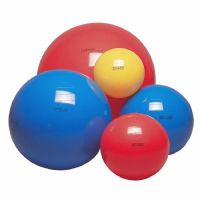 | Gymnic Exercise Balls View Product |
.jpg&newwidth=365&maxheight=200) | Cushy-Air Body Training Inflatable Exercise Balls View Product |
Exercise balls encourage both physical and cognitive engagement for individuals of all ages. Their soft, safe design invites users to develop balance and coordination skills, stimulating various muscle groups as they balance or bounce. This interactive approach enhances proprioceptive and vestibular inputs, helping individuals better understand their body movements and position in space. But the allure of exercise balls doesn't stop at physical development. They also have calming properties that can help alleviate anxiety and restless energy.
 | Textured Sensory Walls View Product |
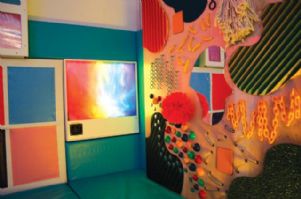 | Sound and Light Visual Stimulation Panel View Product |
 | Gravity Wonder Wall for Visual and Tactile Stimulation View Product |
Textured and tactile wall panels provide children with an interactive experience that stimulates both their sense of touch and sight. With a range of textures, from smooth to rough, bumpy to soft, these panels offer a diverse tactile encounter that enhances sensory awareness. Children can better understand different textures through hands-on interaction, promoting sensory integration.
Moreover, these panels offer tactile stimulation and engage children visually with vibrant patterns and colors. This visual engagement captivates their attention and assists in developing visual tracking skills.
Specially designed to activate a child's senses, sensory toys incorporate light or tactile elements. You may think of a fidget spinner or a fidget pop toy, but these sensory toys are available in various shapes and sizes. These toys employ lighting effects or diverse textures to create an immersive, interactive environment that encourages exploration and enhances sensory development. By engaging the sense of touch or sight, these toys provide children with valuable opportunities for learning and engagement, focusing on stimulating their senses.
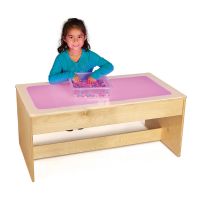 | Jonti-Craft Large Multicolored Light Table View Product |
 | LED Light Illuminators for Visual Sensory Feedback View Product |
Light-up furniture brings a vibrant twist to sensory rooms, adding a layer of visual stimulation alongside their standard function. These pieces of furniture, which may include tables, chairs, or bean bags, come to life with embedded lights, casting a soft glow in various colors. This feature enchants children and offers visual sensory stimulation that can help improve their visual perception and tracking skills. Moreover, the changing colors and patterns can be soothing, promoting a calming environment and potentially assisting in regulating emotions.
Incorporating bubble tubes into a sensory room offers a multitude of benefits for individuals of all ages and abilities. These mesmerizing and interactive installations provide visual stimulation, promote relaxation, and encourage sensory exploration. The gently rising bubbles and changing colors captivate attention, making them ideal for calming overstimulated individuals or engaging those with sensory processing challenges. The soothing visual effects of bubble tubes can also aid in reducing anxiety and stress, creating a tranquil environment conducive to relaxation and focus. Additionally, these dynamic features promote cause-and-effect learning, encouraging interaction and sensory engagement.
 | Fiber Optic Color Changing Light Waterfall View Product |
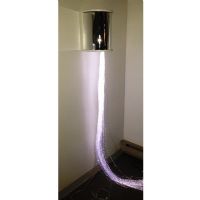 | Fiber Optic Wall Sconce View Product |
 | Genie Fiber Optic Light Strands - iPhone Controlled View Product |
The gentle, color-changing lights and mesmerizing effects produced by fiber optics stimulate visual interest and encourage relaxation, making them an ideal addition to sensory rooms. These lighting solutions provide a safe and low-maintenance alternative to traditional light sources, offering a durable and energy-efficient option for creating enchanting visual displays. In addition to their aesthetic appeal, fiber optics offer a calming and engaging sensory experience, making them particularly beneficial to those in need.
Projectors can create dynamic visual displays, projecting captivating images, patterns, and scenes onto walls, ceilings, or interactive surfaces, fostering a transformative and visually stimulating environment. These versatile devices can be used to customize the sensory experience, providing flexibility to adapt the projected content to suit individual preferences and therapeutic goals.
 | Front Opening Velcro Sensory Vests - child to adult sizes available View Product |
 | Sea Life Twin Weighted Blanket View Product |
Weighted products provide deep touch pressure and proprioceptive input, promoting relaxation and a sense of security for users. The gentle, evenly distributed weight can help reduce anxiety, calm the nervous system, and improve focus, making them particularly beneficial for individuals with sensory processing challenges or those seeking sensory comfort. The use of weighted blankets and vests in a sensory room can contribute to creating a calming and soothing environment, aiding in sensory regulation and promoting a sense of well-being.
 | Sound and Light Visual Stimulation Panel View Product |
.jpg&newwidth=365&maxheight=200) | Recordable Buzzers, Set of 4 View Product |
The use of carefully curated soundscapes, soothing music, or interactive auditory elements like toys can contribute to a calming and engaging environment. Audio stimulation can help individuals regulate their sensory experiences, providing a therapeutic avenue for managing anxiety, promoting focus, and enhancing overall well-being. Whether used for creating tranquil atmospheres, interactive auditory feedback, or immersive storytelling, audio stimulation adds a dynamic layer to the sensory room, fostering a multi-sensory environment that caters to diverse sensory needs.
 | Cocoon Swings for Sensory Integration View Product |
 | Adult Cuddle Swing - Cocoon Sensory Therapy Swing for Autism View Product |
 | Assorted Indoor/Outdoor Swings for Kids View Product |
Sensory swings can promote vestibular stimulation, helping individuals develop balance, spatial awareness, and sensory integration skills. The rhythmic motion of swinging can also have a calming effect, aiding in sensory regulation and reducing anxiety. Additionally, swings offer opportunities for proprioceptive input, aiding in body awareness and promoting a sense of security and comfort. These versatile installations encourage movement and physical activity, contributing to overall sensory engagement and well-being.
 | Gel Tiles for Tactile Stimulation View Product |
 | Gel Aquarium Pad with Moveable Fish View Product |
 | Weighted Multisensory Sparkling Gel Lap Pad View Product |
The dynamic and colorful nature of gel pads captivates attention, making them ideal for both children and adults who need this form of stimulation. The tactile feedback from pressing, touching, or manipulating the gel pads can promote fine motor skills and hand-eye coordination. Gel pads can also be placed in warm water or in the fridge for additional therapeutic benefits and stimulation.
| Cuddly Cousins and Switches Kit View Product | |
 | Colorful Game Sound Buzzers, Set of 4 View Product |
Switches enable individuals to control various sensory stimuli, such as lights, sounds, or tactile elements, empowering them to engage with their environment and make choices based on their preferences. Switches promote cause-and-effect learning, fine motor skill development, and cognitive engagement, making them valuable tools for individuals with diverse sensory needs. Additionally, switches can be tailored to accommodate different abilities, ensuring inclusivity and accessibility within the sensory room.
 | Chewy Tubes for Oral Motor Development View Product |
 | Chew Stixx Textured Lolli for Oral Stimulation View Product |
These specialized toys are designed to offer oral motor stimulation, proprioceptive input, and tactile exploration, catering to individuals who seek oral sensory comfort and regulation. The use of oral stimulation toys can promote self-soothing, reduce anxiety, and aid in sensory integration. Additionally, these toys can support the development of oral motor skills and provide a safe and appropriate means for individuals to satisfy their oral sensory-seeking behaviors.
Sensory rooms offer transformative benefits for individuals of all ages, promoting sensory integration, enhancing motor skills, and providing a calm, controlled environment. It doesn't have to be a daunting task to set up these spaces; with the right tools and understanding of unique needs, they can fit any budget. For more information on multi-sensory-enhancing tools and helpful resources for caregivers, hop over to our homepage and visit us at Caregiver University.

Co-founder/CEO of Rehabmart, Pediatric Occupational Therapist, husband, and father. Passionate about connecting special needs kids with superb nutrition, sensory integration, and complementary health strategies. Excited about Rehabmart's mission to become the premier online educational platform which empowers caregivers by spotlighting innovative devices and interventions to achieve optimal patient response and recovery.